In August 2024, scientists from the Trofimuk Institute of Petroleum Geology and Geophysics of the Siberian Branch of the Russian Academy of Sciences (IPGG SB RAS) (Novosibirsk) met in Transbaikalia with their colleagues from the Institute of Natural Resources, Ecology and Cryology INREC SB RAS (Chita) and Nanjing Institute of Geology and Paleontology (China) conducting the field works here.
One of the most exciting results of the international team’s work on the regional geology was the discovery of dinosaur footprints.
According to experts, the imprints of three-fingered limbs may belong to a dinosaur, a close relative of iguanodontids, herbivorous dinosaurs from the species of ornithischian dinosaurs. It is assumed that the footprints were made in the early Cretaceous period. This is the rarest case when dinosaur footprints are found on the territory of Russia and the second location in Cretaceous sediments.
Dinosaur footprints belonging to a Cretaceous iguanodon were first found in Kislovodsk in 1988. From that time on, there were only a few reports of Jurassic and Cretaceous dinosaur footprints in Russia, dominantly in the area of North Caucasus.
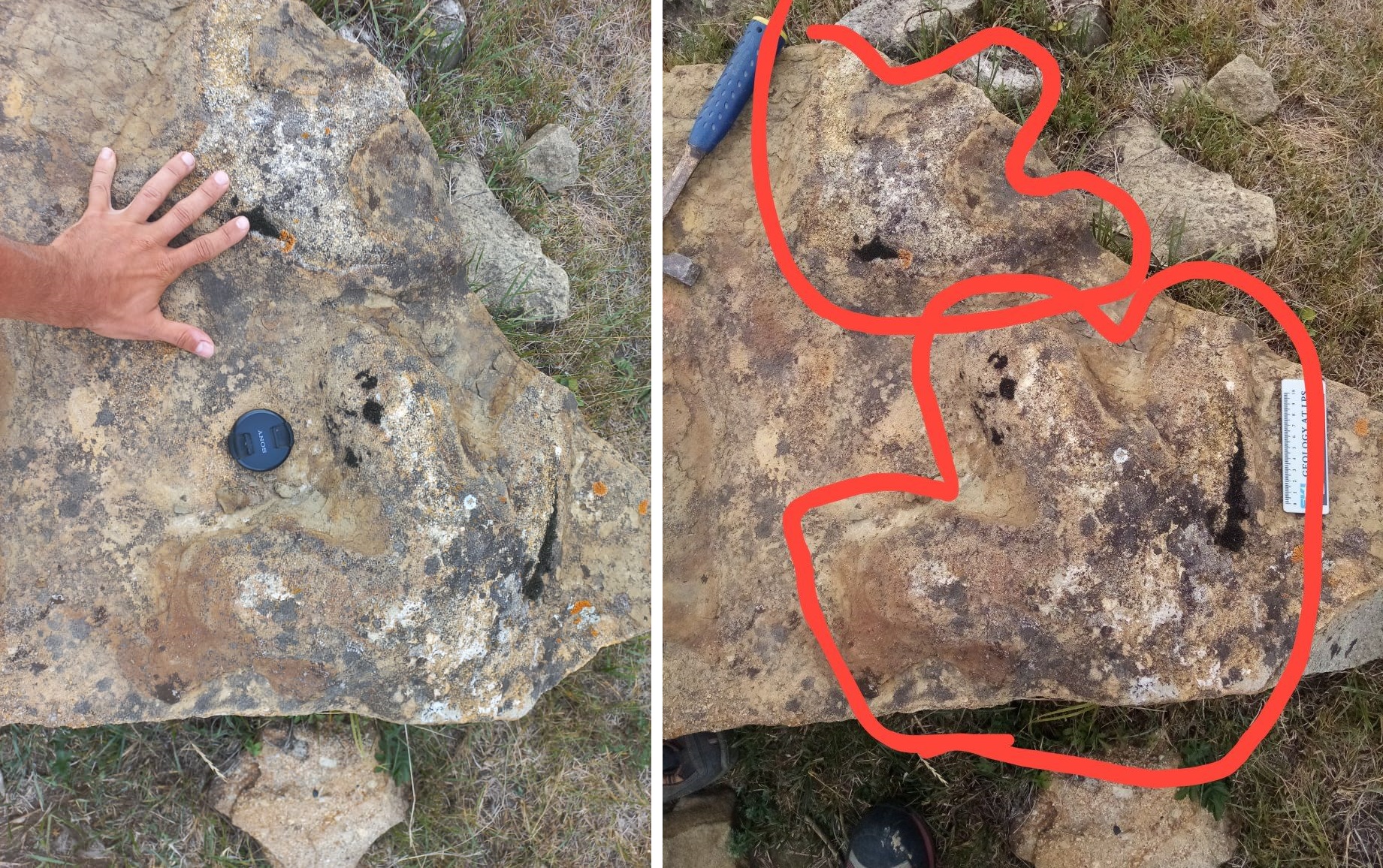
Slab showing dinosaur footprints. On the right photo the footprints are circled in red
Out of all places, why was the research conducted in Transbaikalia?
Scientists from Russia and China traveled to Transbaikalia to attend key sections of the Upper Mesozoic. Among the previous finds in these sediments were the remains of fossil fishes, freshwater crustaceans (conchostracans, or clam shrimps) and insect larvae (mayflies). These belong to the unique Jehol biota, well-preserved fossilized representatives which are abundant in northeastern China, which have greatly added to our understanding of the Early Cretaceous life: plants, animals, marine and terrestrial organisms (120-130 mln years ago).
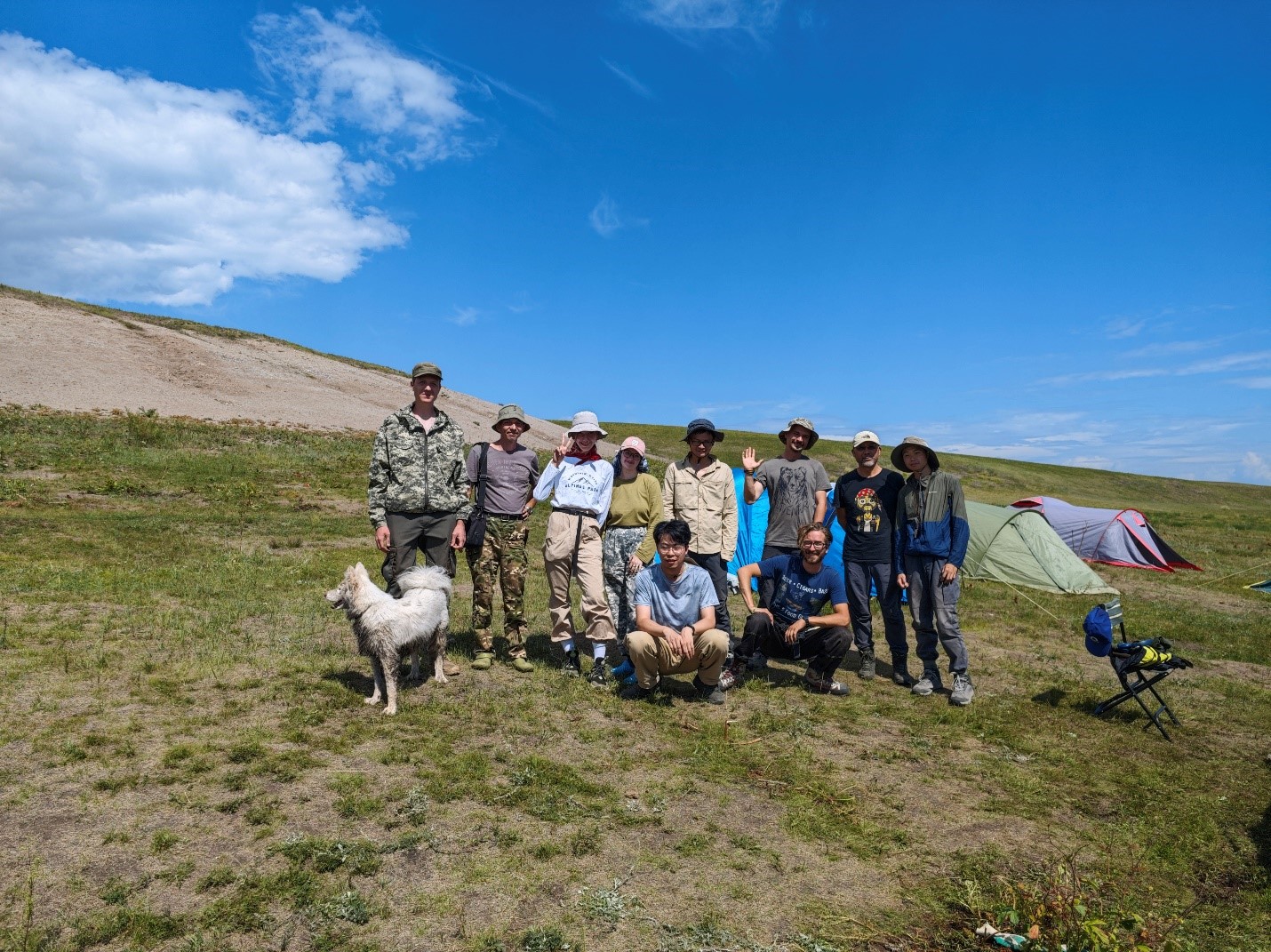
Researchers from Russia and China. The lower row: Jiahao Li (NIGPAS) and Vsevolod Efremenko (IPGG SB RAS), the upper row (from left to right) : Evgeny Vasilenko (INREC), Peter Yang (IPGG SB RAS), Victoria Timofeeva (IPGG SB RAS), Arina Kungurova (IPGG SB RAS), Dazhan Zheng (NIGPAS), Igor Kosenko (IPGG SB RAS), Haichun Zhang (NIGPAS), Xiao Teng (NIGPAS)
The researchers attended several interesting cross-sections (Turga, Belaya Gora, Daya, Ust-Kara), where they collected samples of fossil fauna and tuffs, as well as samples for detailed sedimentological studies. The tuffs, which may contain grains of zircon mineral, are crucial for determination of the absolute ages of rocks, thus allowing the radioisotope dating method to calculate geologic age in years with great accuracy.
What specifically are the finds about?
We have found numerous remains of invertebrate fauna,” said Igor N. Kosenko, PhD, senior researcher of the Laboratory of the Mesozoic and Cenozoic Paleontology and Stratigraphy (IPGG SB RAS). “These are, first of all, insects; various crustaceans (from conchostracans and ostracods to Triopsidae known as tadpole shrimp or shield shrimp); besides, numerous fish remains have largely contributed to the collection of our finds. Many insects are shown to belong to novel, as yet undescribed species. There’s a lot of work for us to do to describe them”.
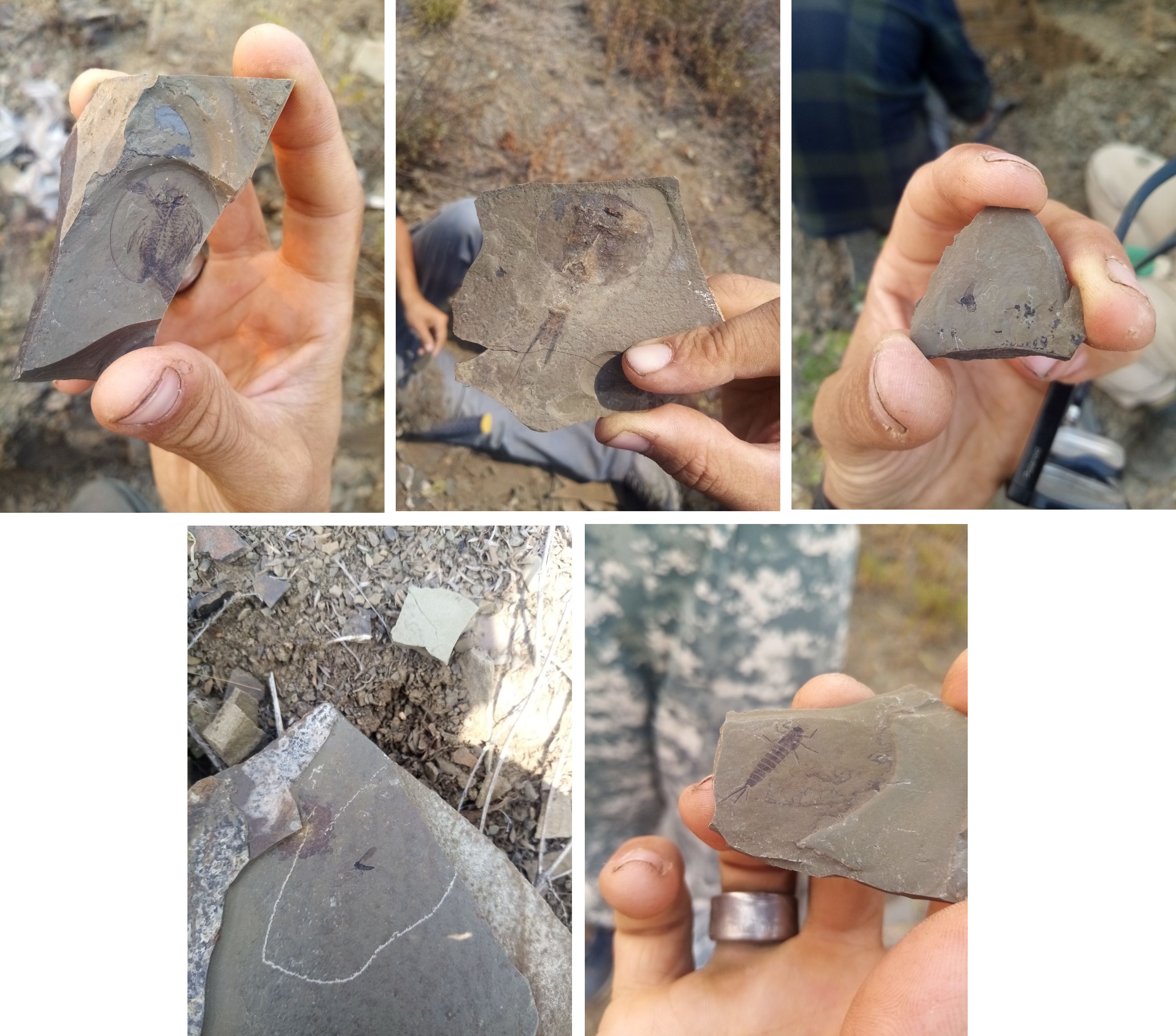
Top: 1, 2 - fossil shield shrimps, 3 - two-winged insect (the Order Diptera). Bottom: 1 - insect of the Order Diptera species, 2 - mayfly larvae
The researchers also have collected many samples for further sedimentological studies. This will be helpful in their reconstructing in detail the region-wide sedimentation conditions and their gradual changes. As a result, correlations will be made for Upper Mesozoic strata between Transbaikalia and China. Besides, scientists will be able to clarify the sediments age in Transbaikalia and get better understanding of the Jehol biota, its evolution and distribution.

Top: 1 - shield shrimps, 2 - tail of shield shrimps. Bottom: 1 - insect larva, 2 - insect from the Order Diptera
In this work, the dinosaur footprints found on an 800-kilogram stone slab will cirtainly prove useful and shed more light on the Cretaceous fauna. According to Chinese researchers, these footprints are very similar to those found in the area of China. In this regard, Russian scientists anticipate new finds of dinosaur remains during further work in Transbaikalia.
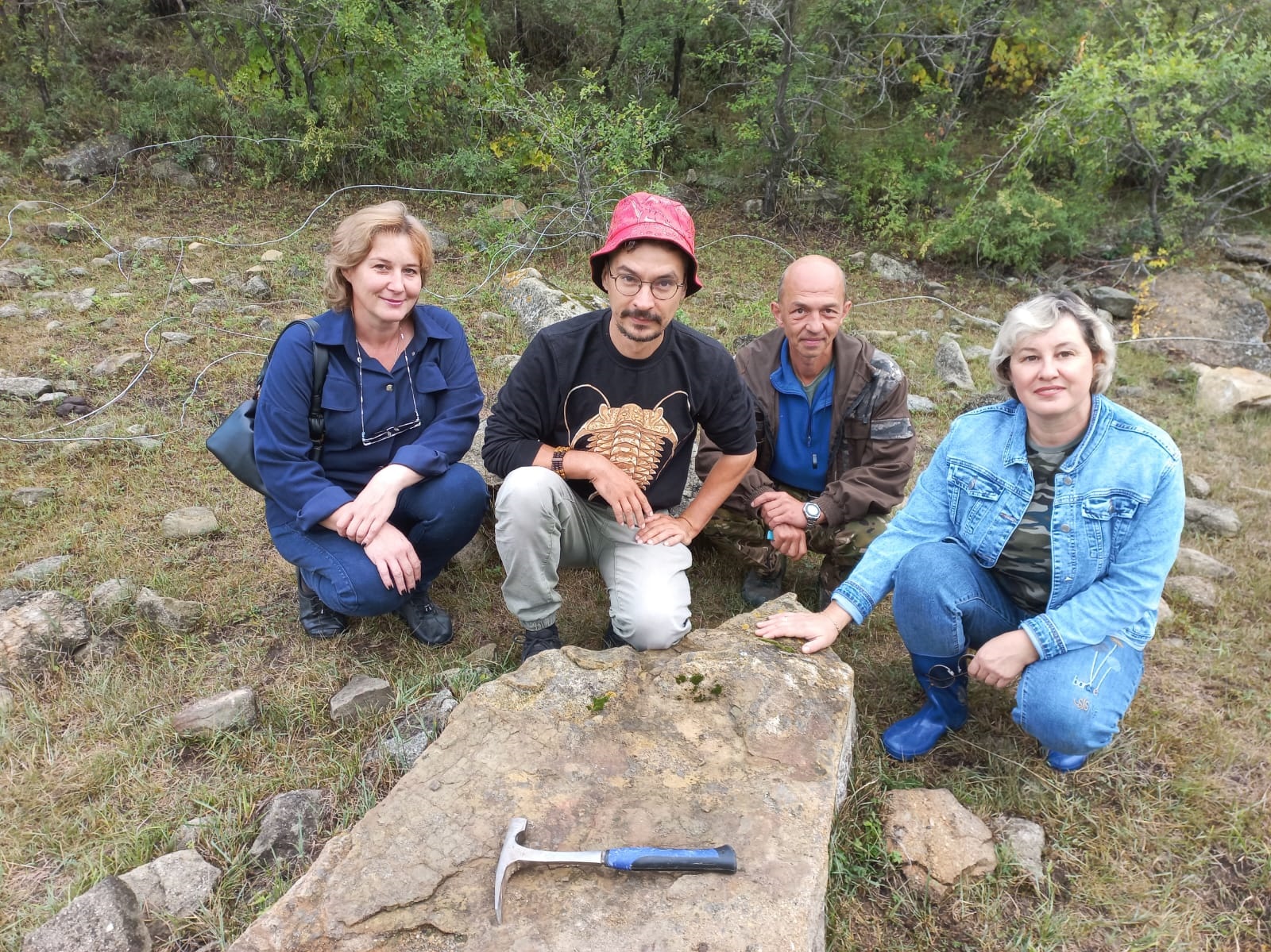
Next to the slab with dinosaur footprints: Natalia Shaidurova - head of the urban settlement “Ust-Kara”, Igor Kosenko, Peter Yan – IPGG SB RAS, Olesya Shadrina - director of the Ust-Kara mine museum.
What is the fate of the unique archeological discovery?
The plate with dinosaur footprints has been transferred to the Ust-Kara mine museum, which was arranged by the Priisk Ust’-Kara company.
The great importance of this find for future research works was noted by Dr. Oksana Dzyuba, head of laboratory of the Mesozoic and Cenozoic Paleontology and Stratigraphy of IPGG SB RAS, Boris Shurygin, RAS Corr. Member, principal researcher, and Vyacheslav Glinskikh, RAS Corr. Member, Director of IPGG SB RAS.
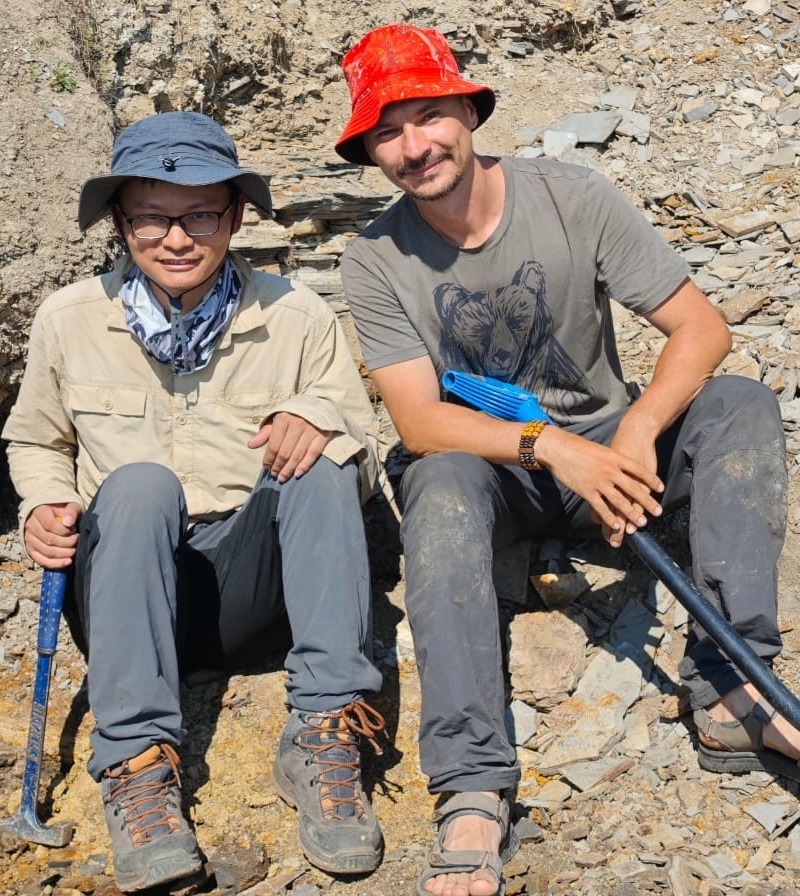
Prof. Dazhan Zheng (left) was the first to identify the dinosaur footprints, and Igor Kosenko (right)
The studies conducted by the IPGG paleontologists and stratigraphers were supported by Russian Science Foundation grant No. 22-17-00228 (https://rscf.ru/project/22-17-00228/), sedimentological and other studies were funded from the IPGG SB RAS budget (projects FWZZ-2022-0004, FWZZ-2022-0008).
Published by IPGG SB RAS Press Service
Photos courtesy of I. Kosenko and V. Efremenko